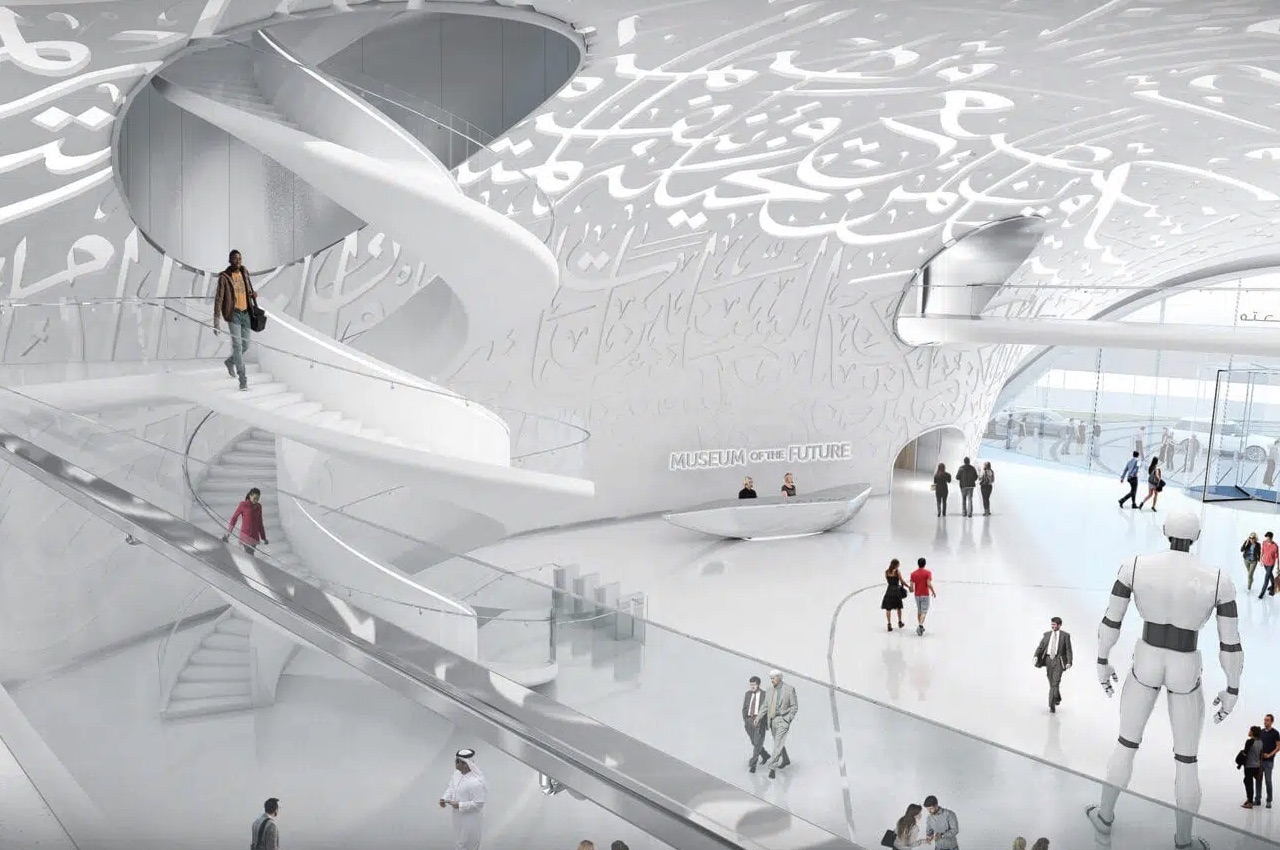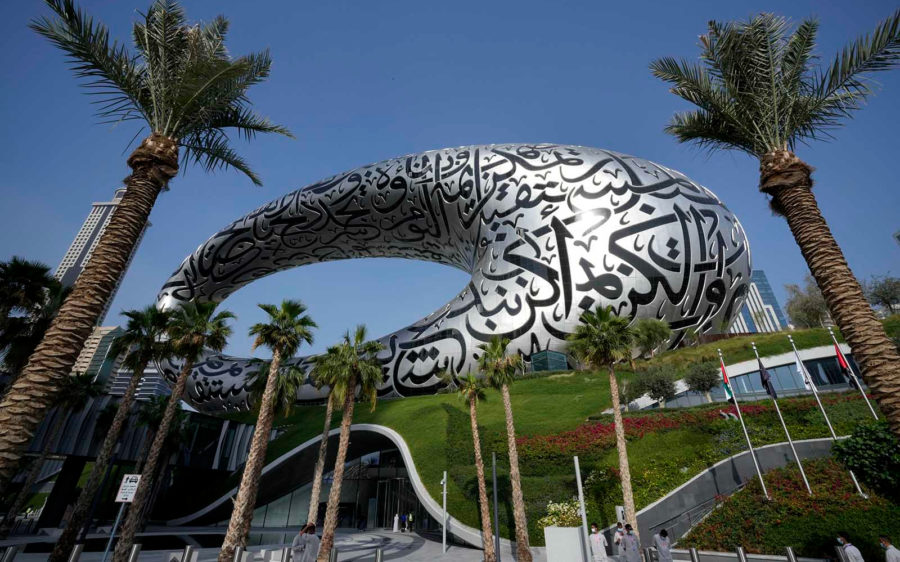The most beautiful building in the world !!!
How can the EAU make this bold claim? Is this is in fact ‘the World’s most beautiful structure’?
Nonetheless welcome to the future…
The following written content from Anugraha Sundaravelu

Beautiful buildings have always been built for a purpose: to mark an event, house powerful institutions or make a statement. Behind the beautiful buildings of Dubai, the statement seems to be ‘because we can’.
What started off in 1999 with the Burj Al Arab, a sailboat shaped symbol to put Dubai on world travellers’ wish lists has worked very well for the country. The United Arab Emirates saw a tourism revenue of £28 billion in 2019, up from £15 billion the previous year.
At a modest 77 metres, The Museum of the Future is far from being a part of Dubai’s skyline that features the world’s tallest tower, the Burj Khalifa, but it does succeed in taking its place among Dubai’s iconic buildings.
Even before its completion, tourists were taking pictures with the the museum’s incomplete framework in 2019, comprising 2,400 diagonally intersecting steel beams.
But what makes the UAE boldly claim that this is in fact ‘the world’s most beautiful building’?
It could be that it’s a building whose shape you’d be hard pressed to describe to someone who hadn’t seen it. Unlike the Shard, the Gherkin or even the Pyramids which have very real visual descriptions, the Museum does not easily fit an elementary geometric shape or real world example.
While you could describe it to an extent as something like an egg or a ring, the architectural term for the shape is a ‘torus with an elliptical void’.
‘There is nothing that quite evokes the shape,’ said Lath Carlson, executive director of the Museum of the Future who prefers to liken it to an eye.
A torus sounds about the right shape for a building that was supposedly designed by an algorithm, consisting of zero support columns, relying instead on a network of diagonal beams for support.
Local architectural firm Killa Design, which won the design competition for the museum in 2015, came up with the shape. According to the architect Shaun Killa, the solid part of the structure represents the knowledge that we have today while the void represents all that we do not yet know — the future.
The opening of the Museum of the Future coincides with Dubai’s turn to host the World Expo 2020 — the first country in the Middle East to do so — delayed by the pandemic. Keeping with the spectacle, the palindrome date of 22.2.22 was chosen for the launch.
While the pandemic pushed the construction of the museum over budget and time, it also gave builders a chance to adapt the exhibits to the be ‘pandemic- proof’ with minimal physical interaction needed.
Beyond the structure itself, the thing that catches your eye is the museums’s blinding stainless steel exterior, softened by elegant Arabic calligraphy on the facade. It certainly helps that Arabic is an elegant script with its delicate strokes, lending grace to a structure that otherwise risks being gaudy.
The calligraphy on the outside isn’t purely decorative either. The panels, all 1024 of them individually manufactured by robots, have dimples and grooves to reduce the steel panels from dangerously magnifying the desert heat reflected off them and burning objects in its vicinity. Read more from Metro





